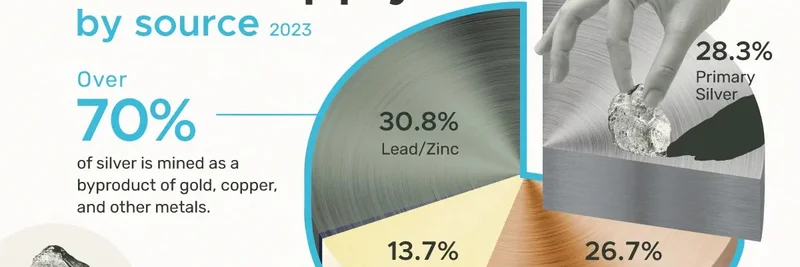Hey there, crypto enthusiasts! If you've been keeping an eye on the evolving world of blockchain projects, you might have come across InterLink Labs. Recently, they updated their whitepaper with a fresh take on tokenomics, introducing a dual-token model that's got people talking. This setup uses two tokens—$ITL and $ITLG—to create a balanced ecosystem that's all about real humans, not bots or big machines. Let's break it down in simple terms, so you can see how it all fits together.
What Makes InterLink's Dual-Token System Unique?
Imagine a blockchain network where the focus is on verifying actual people, kind of like a "proof of personhood" instead of proof of work or stake. That's InterLink's vibe. Their dual-token approach splits responsibilities: one token handles the big-picture stability and institutional stuff, while the other powers everyday user activities. This isn't just fancy jargon—it's designed to make the network more inclusive and sustainable.
The $ITL token is like the anchor of the system. With a fixed supply of 10 billion tokens, it's managed by the InterLink Foundation. Half of these tokens go to holders of the other token, $ITLG, and the rest support growth and partnerships. Think of $ITL as a reserve asset you can stake to access the "Human Layer"—a pool of verified users. It's perfect for venture capitalists, institutions, and protocols that want reliable, long-term involvement. Staking $ITL gives you credibility and helps stabilize the ecosystem.
On the flip side, $ITLG is the token for the people. It has a much larger supply of 100 billion tokens, with 80% earmarked for "Human Node" miners—that's you and me, verified users who participate by getting verified, referring friends, or other simple activities. The remaining 20% is for incentives to keep things buzzing. $ITLG lets you vote in the DAO (Decentralized Autonomous Organization), which means you have a say in how the network evolves. Plus, it gives early access to launchpads for new projects and acts as currency in mini-apps, like games or services built on the platform.
Why Go Dual? The Big Picture Behind the Design
You might wonder, why not just one token? Well, this split helps with things like regulations and functionality. $ITL could be seen as more of a security token, appealing to big players who need compliance, while $ITLG keeps the network lively with utility. It's inspired by giants like Bitcoin (store of value) and Ethereum (day-to-day ops). The goal? Onboard a billion verified users, making it one of the most distributed cryptos out there, based on human participation rather than who has the best hardware or most cash.
This human-centric angle is key. In traditional mining, it's all about power and resources. Here, it's one person, one node, one chance—leveling the playing field. And with anti-bot measures like facial verification, it ensures only real humans get rewards, cutting down on fraud.
Breaking Down the Allocations and Utilities
Let's get into the nuts and bolts. For $ITL:
- Total Supply: 10 billion
- Allocation: 50% to $ITLG holders, 50% for institutional growth and ecosystem support
- Utilities: Staking for access to verified users, reserve for foundation decisions
For $ITLG:
- Total Supply: 100 billion
- Allocation: 80% to Human Node miners, 20% for incentives
- Utilities: DAO voting, project incentives, launchpad access, payments in mini-apps
Once all $ITLG is mined, holders vote on whether to keep it scarce or expand for more users. Smart, right? It puts the power in the community's hands.
How Mining Works and Why It's Sustainable
Mining on InterLink is super accessible—no need for fancy rigs. Early on, it's easy to jump in, which helps grow the network fast. Rewards are balanced so newbies aren't left out, and early birds keep getting perks to stay engaged. There's a vesting schedule for some tokens, meaning they're locked up for a bit to prevent dumps and keep prices steady.
This setup controls inflation and promotes fair play. Whether you're a small holder or a whale, there's opportunity without wrecking the economy. And with verification tied to real IDs, bots can't game the system.
Real-World Impact: Beyond Just Crypto
What's exciting is how this could change things outside of trading. Billions of people worldwide don't have bank accounts—InterLink aims to help with peer-to-peer payments using just a phone and face scan. NGOs could send aid directly to verified folks in crises, skipping middlemen and fraud. Even big tech like Google might use it to pay users for data in AI training, ethically.
It's all about bridging gaps in finance, health, and education, especially for underserved areas.
Wrapping It Up: The Future of InterLink
InterLink's tokenomics isn't just another model—it's a thoughtful blend of stability and participation, tailored for a world where AI makes human verification crucial. If you're into projects that prioritize people over machines, this one's worth watching. Check out their whitepaper or join as a Human Node to start mining. Who knows, it could be the next big thing in building a truly decentralized, human-powered web.
Got questions? Dive deeper into InterLink's official site or follow @inter_link on X for updates. Stay tuned for more insights on emerging tokens right here at Meme Insider!


